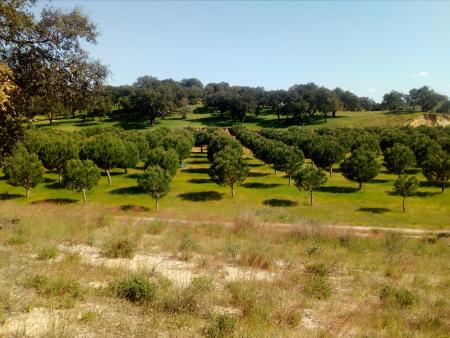
Objective:
Silvo-pastoral systems are quite common in the Alentejo region of south Portugal. Bringing together economic profitability and ecological sustainability is challenging and requires a conscientious management.
We present the example of a young forest owner who manages a farm in south Portugal composed of a mixture of cork oak and stone pine grazed by cattle.
The recognition of severe soil degradation problems and the effort in its recovery has been the priority of this owner. The management options carried out in the last 15 years are now positively reflected in soil quality, biodiversity and in the survival of tree seedlings. Overcoming annual precipitation reduction is one of the main challenges.
Context:
Abegoaria is a 500 ha property, located in the center of Portugal. It is placed over a sandy soil (regosoil) characterized by low nutrient and organic matter content. The climate is typically Mediterranean, characterized by a strong seasonal precipitation irregularity, with an annual average of 600 mm, hot summers (maximum temperatures above 35 ºC are very frequent) and very cold temperatures in winter.
It is a family landowner management oriented to the long term production, with an economic and profitability focus but with a special care in improving the resilience of the system. The main productions are cattle, pine cones (from Pinus pinea) and cork (from Quercus suber).
Contacts:
Alexandra Correia, alexandrac@isa.ulisboa.pt, https://alexandracorreia.wixsite.com/curriculum
João Soares, Herdade da Abegoaria